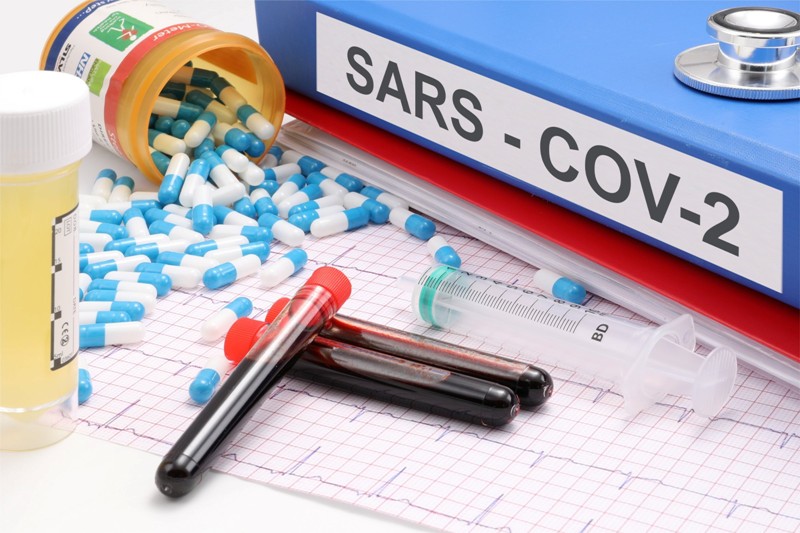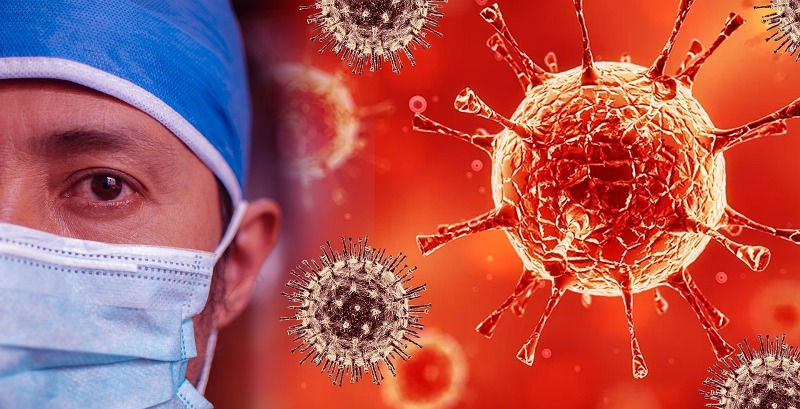Coronaviruses are widespread viruses that, in humans, cause mostly benign diseases such as a simple cold, for example. Nevertheless, there are more worrying forms of coronavirus: the SARS-CoV of 2002, the Mers-CoV of 2012, and more recently, the SARS-CoV-2, better known as COVID-19.
So what are the characteristics of this newcomer? How is it diagnosed and treated? How do we protect ourselves from it? We provide you with some updates in this post.
Background of SARS-CoV-2

Coronaviruses are viruses that owe their name to the crown shape of the proteins that coat them. COVID-19 (whose correct name is SARS-CoV-2) is a new coronavirus identified in China in late 2019 (in Wuhan, Hubei province) and is responsible for pneumonia. On March 11, 2020, the WHO announced that COVID-19 could be qualified as a pandemic, the first one triggered by a coronavirus.
An animal origin and a human-to-human transmission
Although doubts remain, the initial contamination is certainly of animal origin. Indeed, some studies estimate that the pangolin (a small mammal consumed in the south of China) could play a role of intermediate host between the bat (in which a virus very close to SARS-Cov2 is found) and man.
Note: there is no evidence that domestic animals play a role in the spread of COVID-19 coronavirus (sources: OIE, WHO, and Anses).
Infection and incubation
On the other hand, it is well known that inter-human transmission is carried out via the postillions (sneezes, cough), the droplets of saliva emitted by an infected person being charged with the virus. One of the main vectors of virus transmission is unwashed hands with the nose or eyes.
On the other hand, considering the available data on the survival of coronaviruses, the risk of being infected by the COVID-19 coronavirus by touching an object imported from a risk zone is considered extremely low (it is thus always possible to have packages delivered from China).
The virus has a maximum incubation period of 14 days (but the average incubation period is 5 days), and this is one of the main problems we have to face. Infected people can ignore it for 2 weeks and meet many people (family, friends, sports events, etc.) thinking they are harmless.
Respiratory infection caused by COVID-19
COVID-19 is therefore responsible for an acute respiratory infection that results in a characteristic flu-like condition with:
– in the first instance:
◦ a dry cough;
◦ fatigue;
◦ loss of appetite;
◦ headaches;
◦ muscle pain;
– in a second time (2 or 3 days after the first symptoms):
◦ high fever;
◦ breathing difficulties.
These respiratory difficulties would be in a quarter of the cases consecutive to pulmonary embolisms presenting in the form of micro-thrombosis responsible for the hypoxia observed in some patients.
Partial or complete disorders of taste (ageusia) and smell (anosmia) are also observed in 80% of patients: before the onset of symptoms in 12% of cases, during the expression of symptoms in 65% of cases, or afterward in 23% of cases (note that women are more affected by this anosmia than men).
Unlike the flu, which occurs suddenly, the onset of these symptoms is spread over several days.
In the epidemic context, the National Academy of Medicine considers it essential to increase influenza vaccination coverage to facilitate differential diagnosis with SARS-CoV-2 and relieve the health care system.
Although very painful to live with, these symptoms are usually not serious (but they are a source of significant anxiety for many patients). However, the virus is likely to cause severe symptoms, sometimes with a dramatic outcome in frail people:
– people over 70 years of age (although patients between 50 and 70 should be monitored more closely);
– people suffering from chronic diseases (renal dialysis failure, heart failure, cirrhosis, cardiovascular history, diabetes, respiratory disorders…) and a chronic respiratory pathology likely to be more harmful during a viral infection;
– Immunocompromised persons due to congenital or acquired immunodepression:
◦ drug-induced: anti-cancer chemotherapy, immunosuppressant, biotherapy, and immunosuppressive dose corticosteroid therapy,
◦ uncontrolled HIV infection with CD4 <200/mn³,
◦ after an organ or hematopoietic stem cell transplantation,
◦ with ongoing hematologic malignancy,
◦ with metastasized cancer;
– persons with a history of cardiovascular disease: complicated hypertension, stroke or coronary artery disease, or cardiac surgery;
– Pregnant women from the third trimester onwards (by analogy with the series published on MERS-CoV [Middle East Respiratory Syndrome] and SARS despite a small series of 18 cases of SARS-CoV-2 infections showing no excess risk for either the mother or the child);
– people with morbid obesity (body mass index > 40 kg/m²) by analogy with influenza A(H1N1), with one study, also showing that the risk of severe COVID-19 leading to hospitalization, admission to an intensive care unit, or death increases progressively from a BMI of 23;
– insulin-dependent diabetics who are not well controlled or who have complications secondary to their disease;
– patients suffering from trisomy 21 (four times more risk of hospitalization and 10 times more risk of death, undoubtedly due to the dysfunction of the immune system making these patients more sensitive to infections).
In the end, the coronavirus has an average mortality rate of 3%, a rate that rises to 15% in people aged 80 years and over.
In addition, in 30-60% of infected individuals, COVID-19 infection may be asymptomatic or have very few clinical manifestations. However, many patients still have symptoms weeks or even months after the onset of illness. For example, 50% of people have symptoms 4 weeks following infection, and another 10% 6 months later.
Note that patients affected by Covid have a significantly reduced bacterial diversity with an increase in the number of pathogens and a decrease in beneficial species up to 30 days after the disease.


